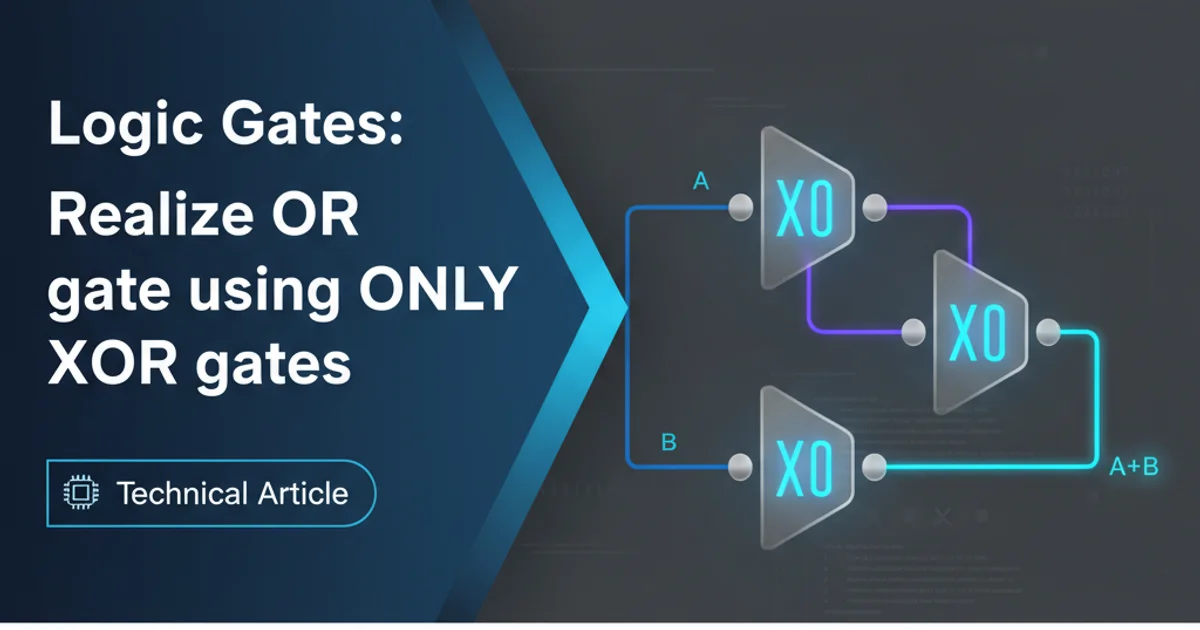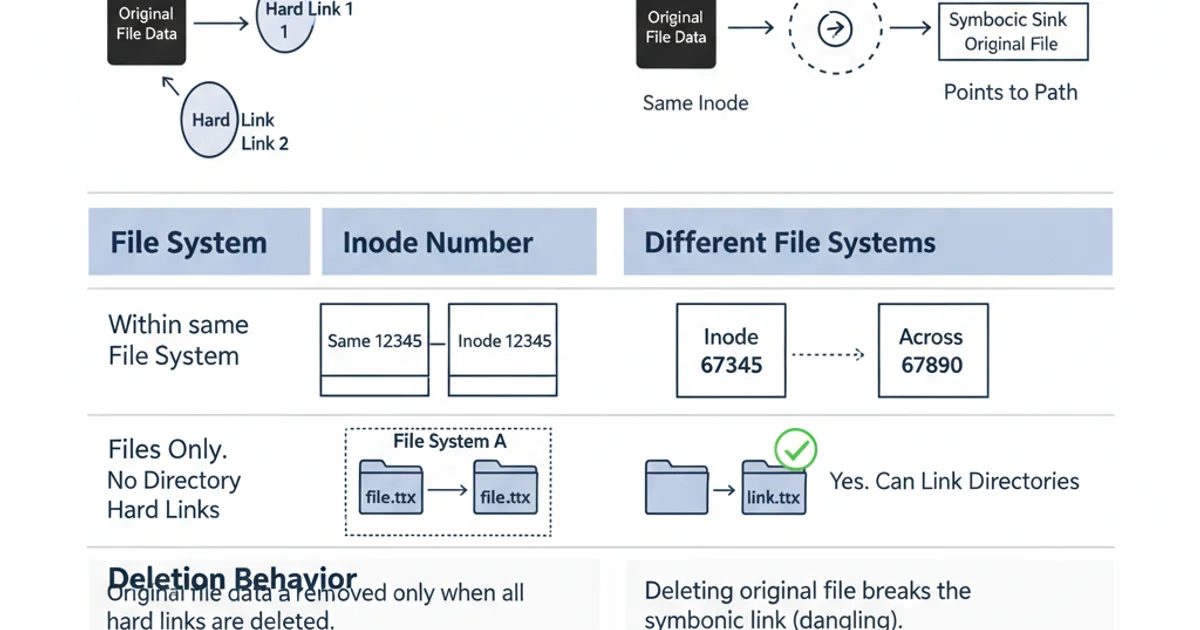What is the difference between a symbolic link and a hard link?
Categories:
Symbolic Links vs. Hard Links: Understanding File References in Unix

Explore the fundamental differences between symbolic links (symlinks) and hard links in Unix-like operating systems, including their creation, behavior, and use cases.
In Unix-like operating systems, files are not just data; they are also metadata and references. When you create a file, the operating system assigns it an inode (index node), which stores crucial information about the file, such as its permissions, ownership, timestamps, and the physical disk blocks where its data resides. A file's name is merely a pointer to this inode. This concept is central to understanding the difference between symbolic links and hard links.
What is a Hard Link?
A hard link is essentially another name for an existing file. It points directly to the same inode as the original file. This means that both the original file name and the hard link are equally valid references to the same data on the disk. When you create a hard link, you are not creating a copy of the file's data, but rather an additional directory entry that points to the same inode. Because hard links refer directly to the inode, they must reside on the same file system as the original file and cannot link to directories.
# Create an original file
echo "This is the original content." > original_file.txt
# Create a hard link to the original file
ln original_file.txt hard_link.txt
# Verify they point to the same inode (inode numbers will be identical)
ls -i original_file.txt hard_link.txt
# Modify content through the hard link
echo "Appended content." >> hard_link.txt
# Check original file content (it will also be updated)
cat original_file.txt
Creating and demonstrating hard links
graph TD
subgraph File System
inode123["Inode 123\n(Data Blocks)"]
end
original_file["original_file.txt"] --> inode123
hard_link["hard_link.txt"] --> inode123
style inode123 fill:#f9f,stroke:#333,stroke-width:2px
style original_file fill:#ccf,stroke:#333,stroke-width:2px
style hard_link fill:#ccf,stroke:#333,stroke-width:2pxVisual representation of a hard link pointing to the same inode as the original file
What is a Symbolic Link (Symlink)?
A symbolic link, often called a soft link or symlink, is a special type of file that contains a text string which is the path to another file or directory. Unlike a hard link, a symlink does not point directly to an inode. Instead, it points to the name of another file or directory. This means that a symlink can span across different file systems and can link to directories, which hard links cannot. If the original file or directory that a symlink points to is moved or deleted, the symlink will become 'broken' or 'dangling' because its target path no longer exists.
# Create an original file
echo "This is the original content." > original_symlink_target.txt
# Create a symbolic link to the original file
ln -s original_symlink_target.txt sym_link.txt
# Verify (symlink will show its target path)
ls -l original_symlink_target.txt sym_link.txt
# Read content through the symlink
cat sym_link.txt
# Delete the original file
rm original_symlink_target.txt
# Try to read through the symlink (it will fail)
cat sym_link.txt
Creating and demonstrating symbolic links
graph TD
subgraph File System A
inode123["Inode 123\n(Data Blocks)"]
original_file["original_file.txt"] --> inode123
end
sym_link["sym_link.txt\n(Points to 'original_file.txt')"] --> original_file
style inode123 fill:#f9f,stroke:#333,stroke-width:2px
style original_file fill:#ccf,stroke:#333,stroke-width:2px
style sym_link fill:#cff,stroke:#333,stroke-width:2pxVisual representation of a symbolic link pointing to the name of another file
Key Differences and Use Cases
Understanding the core distinctions between hard and symbolic links is crucial for effective file system management. Each type of link serves different purposes and has specific advantages and limitations.

Comparison of Hard Links vs. Symbolic Links
Hard Link Use Cases:
- Data Integrity: Useful for creating multiple entry points to a critical file, ensuring that the data persists even if one of the names is deleted.
- Version Control (simple): In very basic scenarios, you might use hard links to keep multiple 'versions' of a file accessible without duplicating disk space.
Symbolic Link Use Cases:
- Cross-Filesystem Linking: Essential for linking files or directories across different partitions or storage devices.
- Directory Linking: The only way to create a link to a directory.
- Software Installation/Management: Often used to point to the latest version of a library or application, allowing updates without changing configuration paths.
- Path Abstraction: Providing a shorter or more convenient path to a deeply nested file or directory.
rm to delete a file that has hard links, only one directory entry is removed. The file's data and inode remain until all hard links are gone. Deleting a symbolic link only removes the link itself, not the target file.